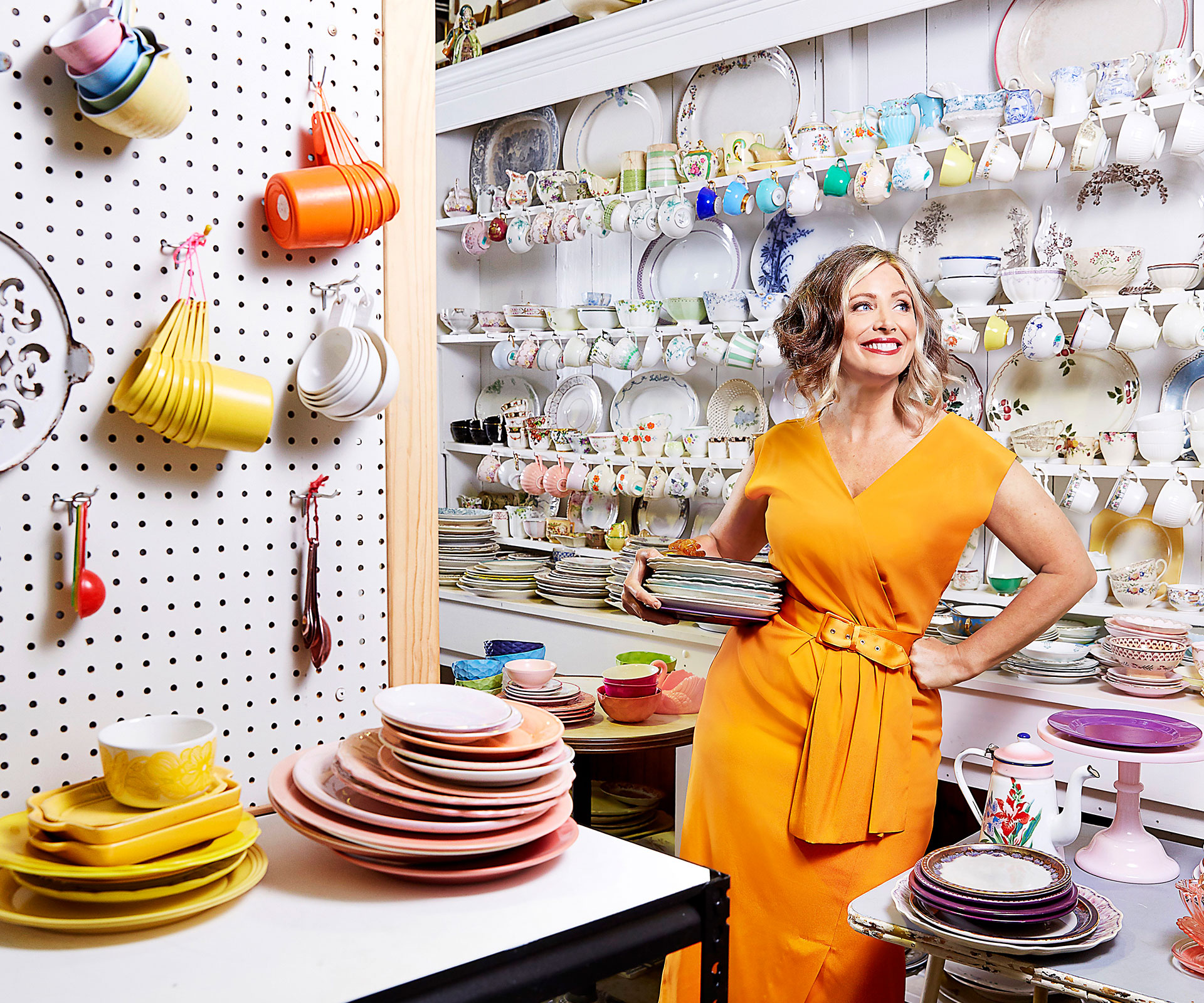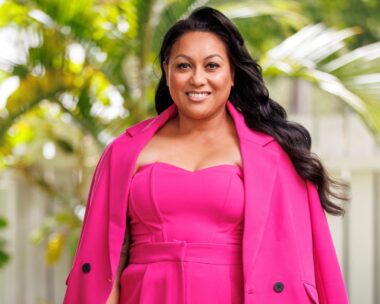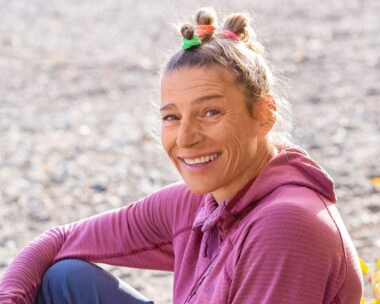Michele Cranston
Michele Cranston started her food career as a head chef in Sydney. She went on to work in London, branch into food styling as well as recipe development, and write more than 10 cookbooks. Today, Michele is The Australian Women’s Weekly’s food editor-at-large, and this month launches A Simple Table – her first cookbook under her own name.
Michele explains that in her family, the cooking gene skipped a generation. “My mother won’t disagree with me when I say her cooking was uninspiring. She was working full-time, had a husband who didn’t like fancy food and three hungry kids. For Mum, it was about putting food on the table. But my grandparents lived next door and had a beautiful kitchen garden, and my grandfather [Hugh] loved baking and was a great influence on my life. We would always bake together. Given that this was the 1960s and early 70s, when you couldn’t buy a bunch of fresh herbs, to have big piles of fresh parsley, mint and spring onions was really special.”
In her teens, Michele became really interested in food and, at night, she says, “I can remember curling up in bed and reading [British cook] Elizabeth David’s cookbooks.” She has tried to pass on her passion to 12-year-old son Sam, but says he gets easily bored. “I have taught him a little bit, but I think, as a boy, he’ll come later to cooking. I think girls are really excited about being in the kitchen when they’re young.”
From her time working as a chef, Michele also believes her sort of passion for cooking is – with a few exceptions – very much a female thing. “I think women are more nurturing with their food than men, especially in commercial kitchens where there’s always an ego involved. I think men are always trying to make a point, rather than cooking from the heart.”
Five key kitchen staples: Fresh and preserved lemons, parsley, olive oil, fresh tomatoes and parmesan.
Michele’s Last Supper: “Something fantastically seafood as an entrée – maybe freshly grilled prawns – and then roast chicken, followed by ice cream and berries.”

Julie Goodwin, MasterChef’s first Australian Winner
Julie Goodwin
The very first thing Julie Goodwin remembers cooking was pikelets. She was around five years old and it was the start of a baking education care of her mum, Marleen, that would prove pivotal to the first MasterChef Australia winner.
“My mum taught me the basics and she introduced me to a love of entertaining and the idea of bringing people together over food,” says Julie, adding that her special forte, making great meals on a budget, came when she moved out of home and started cooking for herself. “It came from not having very much money, but still wanting to eat nice food.”
As a mum of three boys, those skills proved crucial in the family home, but it isn’t just about feeding her crowd. “Cooking for me is the opportunity to show people how much I love them. It means the world to me and nothing makes me happier than having people gathered around a table enjoying a meal that I’ve prepared for them.”
The title of Julie’s new book, Homemade Takeaway, may sound like an oxymoron, but for Julie it makes perfect sense. “My family eat a lot and we have to buy a lot of takeaway to fill them up. The cost of, say, a takeaway burger meal would be well over $50 and I could make beautiful burgers for much less than that from scratch. And Chinese, Thai or Indian takeaways cost even more. It adds up really fast and I can make it better and cheaper.
“When you cook from scratch, you have ultimate control over what you put in your food and the recipes you choose. That’s really important for your health.”
Five key kitchen staples: Garlic, lemons, eggs, dried pastas and rices, and tinned tomatoes.
Julie’s Last Supper: “Steak in a beautiful béarnaise sauce and chips.”

Annabel Crabb, co- author of Special Delivery
Annabel Crabb
When Annabel Crabb goes to a friend’s place for lunch, dinner or even just a catch-up, she always turns up with a home-baked gift – a cake, some pasties; a speciality is a jar of spiced nuts, following her mother Christobel’s secret recipe.
“Food is a great way of saying things that maybe you don’t say all the time,” says Annabel. “It’s quite a profound gesture that says, I took some time out to think about you and to give you this in the hope that it will make your life easier, or make you a bit less sad, or demonstrate that I, too, am excited about your new job. And I think, given that lots of people are time-poor now, giving somebody something that’s obviously taken you quite a time to do is a really lovely thing.”
Just how the busy political journalist, TV host and mother of three finds time to bake, let alone co-author new cookery book Special Delivery, is another story. “I just love it. It’s like my yoga,” says Annabel with a chuckle as youngest daughter Kate plunges her finger into the icing of a just-baked hummingbird cake.
“If I am ever forced to do yoga, I just sit there thinking, ‘I could have made a whole cake in this time’. I cook to relax and I will cook at least twice a day. Dinner, then in the morning or after the kids are in bed, I will also make something for the freezer or bake cakes or biscuits. I’m a bit of a feeder.”
Five key kitchen staples: Lemons, cheese (probably haloumi or feta), cumin, butter and dried apricots.
Annabel’s Last Supper: “A fabulous herby Vietnamese salad with white rice noodles and fresh lime and fish sauce, mango, lots of chopped up herbs – coriander and mint, and maybe some dill – roasted peanutsand whatever kind of outrageously expensive shellfish is available, like giant prawns char-roasted or griddled until they’re a bit blackened. For dessert, gingerbread ice-cream sandwiched between two ginger-nut biscuits.”
Words by
Photos by Alana Landsberry
Styling by Rebecca Rac and Bianca Lane




